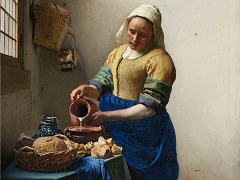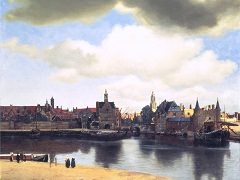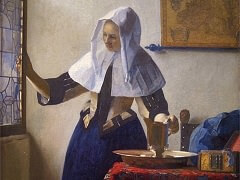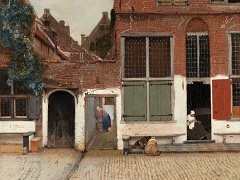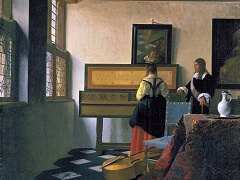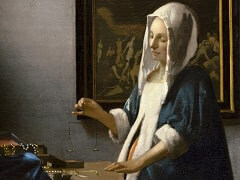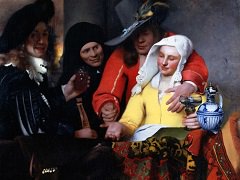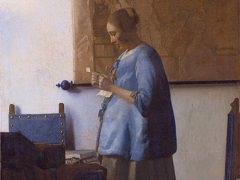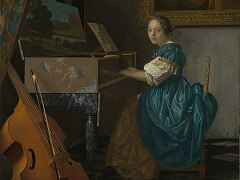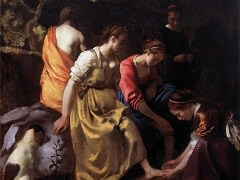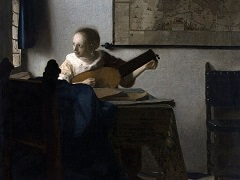10 Fun Facts of The Girl with a Pearl Earring by Vermeer
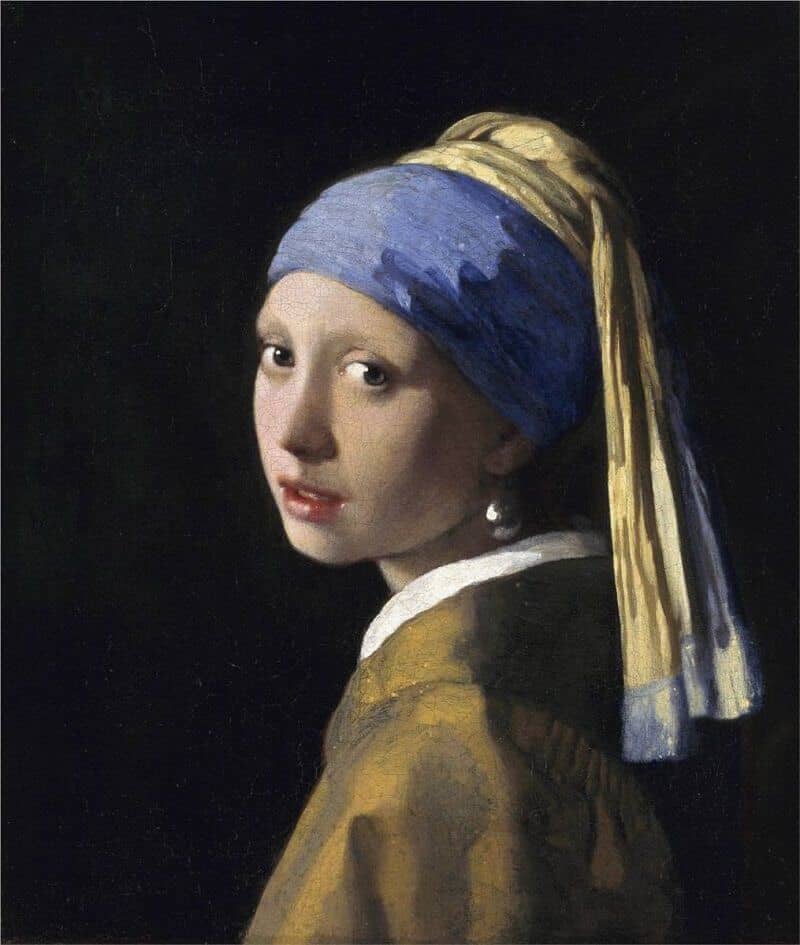
In Girl with a Pearl Earring, one of Vermeer's most engaging images, a young girl dressed in an exotic turban turns and gazes at the viewer. Her liquid eyes and half-opened mouth impart the immediacy of her presence, yet her purity and her evocative costume give her a lasting quality, unconstrained by time or place.
The relatively large scale of this figure reveals how Vermeer enhanced the sense of realism through his expressive paint techniques. For example, he enlivened the young girl's half smile with two small white dots on either side of her mouth, echoing the highlights in her eyes. He also ingeniously used his paints to capture the effect of light falling across her features, turban, and ocher-colored jacket. He evoked the delicacy of her skin with a soft contour for her check, which he created by extending a thin glaze slightly over the edge of the thick impasto defining the flesh color. He indicated reflected light from the white color in the pearl earring, but also, and more subtly, in the shadows on her left cheek. Finally, he painted the shaded portion of the blue turban by covering a black under-pamt with freely applied glazes of natural ultramarine.
The background of the Girl with a Pearl Earring does not appear as it does when it came off the Vermeer's easel some 360 years ago. Recent analysis demonstrates that the artist had painted a transparent "glaze" of green paint over the dark underpainting. Originally, the background must have appeared as a smooth, glossy, hard and deep translucent green. This tone set against the warm flesh tone probably produced a more vibrant optical effect than the one which can be observed today.
Dark backgrounds were widely used in portraiture to enhance the three-dimensional effect of the figure. In fragment 232 of his Treatise on Painting, Leonardo da Vinci had noted that a dark
background makes an object appear lighter and vice versa. The girl's enigmatic expression coupled with the mystery of her identity has led some to compare her to the equivocal subject in Leonardo da Vinci's
Mona Lisa. Unlike the Mona Lisa, however, Girl with a Pearl Earring is not a portrait but a tronie, a Dutch term for a character or type of person.
Despite the feeling of immediacy Vermeer thus creates, the young girl's idealized image conveys a sense of timeless beauty. Vermeer worked as a classicist, purifying his images to express lasting rather than transient qualities of life.

10 Fun Facts of The Girl with a Pearl Earring
1. In 2014, the British graffiti artist Banksy put his own spin on the painting. He reproduced the girl on the side of a building in Bristol with an alarm box on the wall in place of the pearl earring.
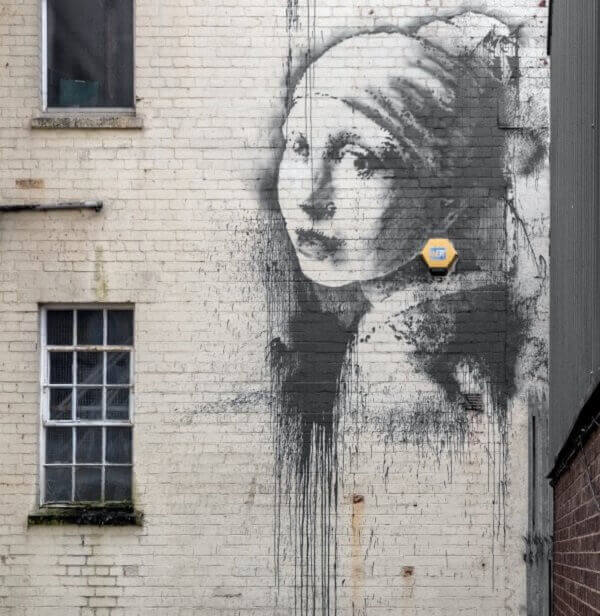
2. The Dutch word "tronie," translates roughly as "face." "Girl with a Pearl Earring" is a head study rather than a portrait. Tronies typically feature an exaggerated facial expression or a subject in some sort of costume such
as the girl's exotic turban.
3. Some art critics call Vermeer's painting the "Mona Lisa of the North."
4. Although the artist was often in dire financial straits and had a large family to support, the ultramarine-toned paint he used for the girl's bright blue turban was expensive. It came from a powder of crushed lapis lazuli,
a rare semi-precious stone. Not only did the paint possess a unique luminescence, it also added to the material value of the artwork.
5. While "Girl with a Pearl Earring" is a priceless masterpiece today, the only time anyone purchased it for money was in 1881, and the winning bid was just two guilders plus a nominal commission. It amounted to less than $30
dollars in the present economy.
6. Vermeer's painting is rich in craquelure. In other words, the paint has cracked into a network of fine lines over the centuries. Not only are these due to age, but also to impacts, such as taps during framing and pressure
on the canvas.
7. Researchers studying the painting in 1994 determined that some of the cracking, especially the darker cracks along the subject's face, are due to a 1915 restoration when technicians used a material containing tree resin to
refresh the varnish.
8. "Girl with a Pearl Earring" won the title of the Netherland's most beautiful painting in 2006 by popular vote.
9. In 1999, author Tracy Chevalier published an historical novel based on the painting. Hollywood made the novel into a film, "Girl with a Pearl Earring," in 2003.
10. The artwork has had several titles over the centuries. Historians believe that it originally was listed in Vermeer's estate inventory as a tronie done in the Turkish fashion. Three decades later, a sale catalog called the painting "Portrait in Antique Costume." For a time thereafter, the painting was called "Girl with a Turban," and much later, "Girl with a Pearl." Its current title, "Girl with a Pearl Earring," came along in the late 20th century.



